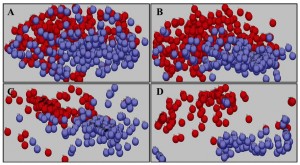PROVO, Utah–Researchers from Brigham Young University have helped create the most robust and accurate fraud detection system to date using information from publicly available financial statements.
Using business intelligence software that learns and adapts as it processes data, a team of professors from the Marriott School of Management developed a model that correctly detects fraud with 90 percent accuracy.
“We’ve improved on 30 years of research in terms of accuracy in capturing fraud patterns,” said Jim Hansen, information systems professor and study co-author. “This improved detection is crucial given the broad societal costs of management fraud.”
Major fraud scandals at Enron, WorldCom and several other firms around the turn of the century were the catalyst for a 78 percent drop in the NASDAQ between 2000 and 2002.
Despite changes to internal control procedures following those scandals, fraud continues to plague economies throughout the world. In 2008, fraud was discovered when Lehman Brothers filed for the largest bankruptcy in U.S. history, which dropped the stock market 22 percent and contributed to the most recent recession.

The MetaFraud framework is comprised of several base-level artificial intelligence “learners” that feed their results into a “meta” or overarching business intelligence algorithm that learns and adapts over time.
Vance likens it to an army general who dispatches spies and informants to carry out reconnaissance and then report their findings back to him. These digital spies report back on patterns observed in annual data, quarterly data, organizational context and industry context so the “general” can generate an assessment of whether or not a firm is fraudulent.
“When people commit fraud, it invariably hits the numbers,” Albrecht said.
The researchers funneled 9,000 instances (instance = financial information for one firm for one year) from more than 15 years through MetaFraud, and compared its predictions of fraud with known fraudulent firms identified by the SEC. MetaFraud correctly predicts fraud with 80 percent accuracy, and over 90 percent accuracy when MetaFraud reports a high level of confidence, which it was able to do 70 percent of the time.
“This is a very low-cost method of taking data that’s already out there, already public, and then in a few minutes calculating, with a fairly high degree of certainty, if fraud is happening in that company,” Vance said.
The details of the algorithm and computer models appear in an article published online ahead of print in a special business intelligence research issue of MIS Quarterly, the premier information systems journal.
In making their MetaFraud algorithm available, the BYU researchers hope to equip investors, external auditors and regulators with a tool that accurately assesses a company’s risks.
“We’ve got to be able to stop fraud and corruption – or at least discover it,” Albrecht said. “There are people all over the world working on this and there have been a lot of papers published on this. We haven’t solved the problem yet, but this is an important breakthrough.”




